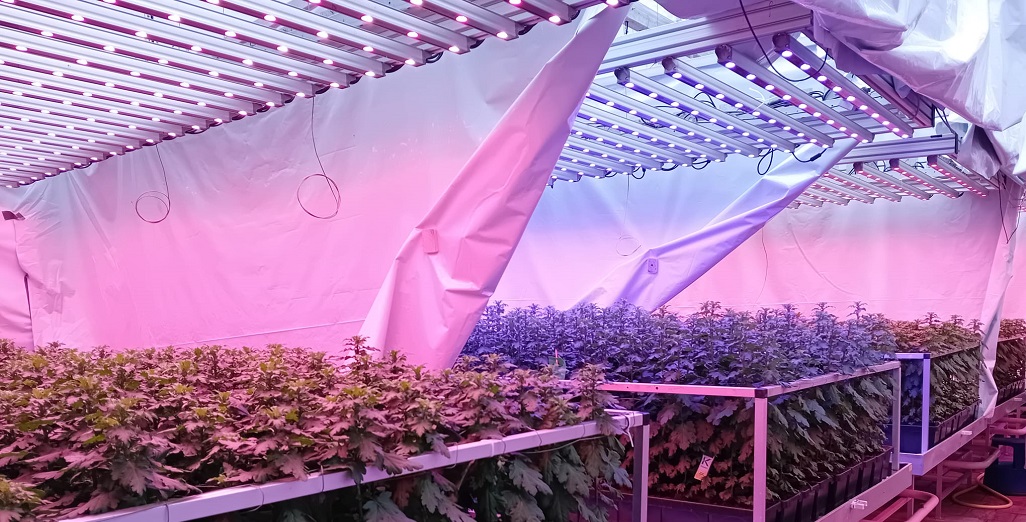Sign up here to subscribe to the Grower2grower Ezine. Every two weeks you will receive new articles, specific to the protected cropping industry, informing you of industry news and events straight to your inbox.
May 2021
Cucumbers – Didymella on the rise

Late Autumn and issues already arising
With the constant rain, warm weather and rise in humidity I have noticed an increase of Didymella, Gummy Stem Blight and powdery mildew. It is almost the perfect storm. Growers, who are prepared as they can be, may still experience issues.
Prevention is better than cure, so I do advise preventative spraying. The use of heating systems and delicate irrigation strategies, to reduce the amount of moisture in your greenhouse, is the most important tool and you should be prepared to react to the conditions. Remove any unwanted leaf area.
Heating:
Maintain a minimum pipe. Even though ambient night-time temperatures are in some areas (my local area), as high as fifteen degrees, it is important to reduce moisture in the environment, I would maintain a minimum pipe and use a heat and vent strategy this week. ‘Heat and vent’ may be considered as wasting energy, but sometimes, and with the tools in your arsenal you just need to consider the consequence of not using this strategy, which in this case is a major fungal outbreak. Not many growers have screens, this does make it slightly more difficult as you could, if it were not raining, be more aggressive with the screening and venting in the night period. There does seem to be some cooler weather on the way and you will require your heating on then so why not now. If you have turned your heaters off, because of the warm nights, then be prepared to spray, spray, spray. If I was growing, I would be more than happy to run at least a 35–40-degree minimum pipe. I would make sure I had a tight maximum pipe level of 45 degrees (unless the nights get cooler), including a maximum on my venting or the appropriate P band if your system allows.
If you have Gummy stem blight, Didymella or brown mould, remove excessive moisture to reduce the spread of these types of issues that can and do substantially reduce a crops overall yield.
Irrigation:
Reducing cycles and adjusting start and stop times is very important. Reduce water content, but as cucumbers are a delicate plant you must be careful not to reduce dramatically, only reduce by small percentages, keep an eye on the root systems and react accordingly. Some properties suffer with high sodium levels and have to reduce sodium in the substrates. If this a requirement, then drive the high sodium levels out early in the day not in the afternoon.
This is what I want to see from a root system, if you see any trace of staining on the roots then act swiftly. Check water content, EC and PH in and out. Ask yourself if your start and stop times need adjusting.
Spraying:
Spray your preventatives, it is important, combined with the other recommendations, to stay on top of funguses, heating alone will not always be sufficient.
Physical:
De-leaf any unwanted leaf matter and especially any sink material. If the weather is amenable then try to do this ASAP.

Cut leaves put them in the middle of your rows and sweep up. This is a good example of how to create good air movement and keep the lower area of the plants clear of unwanted sink leaf material.
You could reduce Didymella or grey mould effecting your fruit by removing the flower from the end of the cucumber once it has formed. It may be too time consuming but on the flip side if you are struggling it may be worth the extra spend on labour.
Article written and compiled by Stefan Vogrincic
All Article’s checked and edited by Marie Vogrincic
I appreciate your comments. Please feel free to comment on the grower2grower Facebook page:
https://www.facebook.com/StefanGrower2grower/
CLASSIFIED
Subscribe to our E-Zine
More
From This Category

Ground cover: woven weed mat or solid plastic… or both?

Integration of Philips GrowWise control system with climate computer allows Huisman Chrysanten to light more effectively and efficiently

New Philips GreenPower LED toplighting force 2.0

Condensation re-visited

Philips GrowWise Research Center to test and showcase intelligent lighting

























